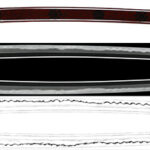Ordering number: 24317
Dai Sho :
---------------------
Dai : Katana in Shirasaya with Koshirae, a Box(NBTHK Tokubetsu Hozon Token)(NTHK estimation paper) (Daisho Koshirae: NBTHK Tokubetsu Hozon Tosogu)
Signature : Oku Yamato Kami Ason Motohira
Kyowa Gan Tori Haru(Spring 1801)
奥大和守朝臣元平
享和元酉春
Sayagaki:This sword was made by Okuyamato no Kami Taira no Ason Motohira. The nine-character signature and inscription date it to the first year of Kyōwa (1801), when the smith was 58 years old, at the height of his mastery. The blade is broad with a full-bodied cross-section, a graceful curvature near the hilt, and a long, powerful tip. It exhibits the superior forging skill typical of the smith, with a finely grained ko-itame pattern, thick layers of ji-nie (surface steel particles), and chikei (surface patterns). The hamon (temper line) is a wide, intermittent gunome with sharp points, featuring a deep nioi (martensitic crystal line) and thick nie. The blade is also decorated with prominent ara-nie (large crystalline grains), sunagashi (sweeping lines of nie), nie-suji (nie lines), kin-suji (golden lines), and yubashiri (irregular streaks of nie), demonstrating the smith's mastery of the Shizu school style. The sword is exceptionally robust and outstanding.
(We divide 4 sections for each sword as Saijyo saku, Jyojyo saku
Jyo saku and regular saku)
This blade belongs to Jyojyo saku ranking.
The blade was polished.
Habaki : Gold foiled double Habaki
Blade Length: 71.6 cm (28.19 in).
Curvature: 1.9 cm (0.75 in).
Mekugi Hole: 1.
Width at Base: 3.13 cm (1.23 in).
Width at Tip: 2.13 cm (0.84 in).
Thickness: 0.65 cm (0.26 in).
Sword Weight: 720 grams (25.4 oz).
Era: Edo period, Kowa 1 (1801).
Shape: Standard width with thick kasane and deep curvature. The boshi extends well, showing a good shape.
Jigane: Well-forged koitame-hada with chikei, showing excellent quality. Ayasugi-hada.
Hamon: Bright and clear notare-midare with deep nioiguchi. The hamon on the boshi is irregular, resembling Naoe Shizu.
Features: Motohira's jigane can be either blackish plain or well-forged with chikei, as in this piece. The hamon features sunagashi and kinsuji, showcasing his skill.
Koshirae: NBTHK Tokubetsu Hozon Tosogu
Tsuba: Circular with kiri-mon scattered design, large with both hitsu-ana filled with gold.
Fuchigashira: Kiri-mon scattered design, unsigned with urabuki.
Saya: Black lacquer.
Kozuka and Kogai: Aoi-mon and three-sunao design, unsigned.
Menuki: Aoi-mon with three pairs, shakudo base with high relief and gold inlay.
Aoi Art’s Comment: This piece by Oku Yamato no Kami Ason Motohira features exquisite koshirae.
---------------------
Sho : Wakizashi in Shirasaya with Koshirae(NBTHK Tokubetsu Hozon Token) (Daisho Koshirae: NBTHK Tokubetsu Hozon Tosogu)
Signature : Oku Yamato Kami Ason Motohira
Kansei 6 Nen Tora Haru(Spring 1794)
奥大和守朝臣元平
寛政六年寅春
Sayagaki: Satsushu Okuyamato no Kami Taira no Ason Motohira. Signed with a "Kuji Mei" inscription, dated to Kansei 6 (1794), made at the age of 51.
This sword exhibits a robust form with a wide blade and large kissaki, demonstrating Motohira's characteristic skill in forging. The hamon features an active gunome midare pattern with pointed elements, abundantly filled with nioi, and includes prominent ara-nie, sunagashi, kinsuji, and nie-suji, creating a fire-like appearance in the boshi. These features reflect the dynamic craftsmanship of his mature years. Additionally, the lightning-like utsuri visible in parts of the jihada is known as Motohira's "fishing hook," a notable characteristic of his work.
(We divide 4 sections for each sword as Saijyo saku, Jyojyo saku
Jyo saku and regular saku)
This blade belongs to Jyojyo saku ranking.
The blade was polished.
Habaki : Gold foiled single Habaki
Blade Length: 54.85 cm (21.6 in).
Curvature: 1.52 cm (0.6 in).
Mekugi Hole: 1.
Width at Base: 3.16 cm (1.24 in).
Width at Tip: 2.46 cm (0.97 in).
Thickness: 0.68 cm (0.27 in).
Sword Weight: 620 grams (21.87 oz).
Era: Edo period, Kowa 1.
Shape: Broad with a thick kasane, deep curvature, and a long boshi, showing excellent balance.
Jigane: Well-forged koitame-hada with chikei, blackish hue.
Hamon: Deep nioiguchi with notare-midare and sunagashi, kinsuji, particularly prominent in the boshi with kinsuji and inazuma.
Koshirae: NBTHK Tokubetsu Hozon Tosogu
Tsuba: Circular with kiri-mon scattered design, large with both hitsu-ana filled with gold.
Fuchigashira: Kiri-mon scattered design, unsigned with urabuki.
Saya: Black lacquer.
Kozuka and Kogai: Aoi-mon and three-sunao design, unsigned.
Menuki: Aoi-mon with three pairs, shakudo base with high relief and gold inlay.
Aoi Art’s Comment: This piece by Oku Yamato no Kami Ason Motohira features exquisite koshirae. Both the katana and wakizashi are outstanding works by Motohira, with koshirae that is also classified as Tokubetsu Hozon Tosogu. The katana's jigane is beautiful, and the wakizashi's hamon work is impressive. The koshirae is sure to satisfy.
The box is adorned with the Shimazu family crest, a cross within a circle, of the Satsuma Kagoshima domain, as well as the Aoi crest.
---------------------
Katana: NBTHK Tokubetsu Hozon Token
Katana: NTHK estimation paper
Wakizashi: NBTHK Tokubetsu Hozon Token
Daisho Koshirae: NBTHK Tokubetsu Hozon Tosogu
Box
Aoi Art estimation paper : whole Oshigata.
Price:5,500,000JPY
Order Form
Related Items:
 Katana: Bishu Osafune Masamitsu (illegible) (the 67th NBTHK Juyo Token)(NBTHK Tokubetus Hozon Tosogu)
Katana: Bishu Osafune Masamitsu (illegible) (the 67th NBTHK Juyo Token)(NBTHK Tokubetus Hozon Tosogu)
 Wakizashi:Oku Yamato no Kami Taira Ason Motohira Kansei 12 Nen Saru Aki (Autumn 1800)(NBTHK Tokubetsu Hozon Token)
Wakizashi:Oku Yamato no Kami Taira Ason Motohira Kansei 12 Nen Saru Aki (Autumn 1800)(NBTHK Tokubetsu Hozon Token)
 Katana: Ho-ki Kami Taira Ason Masayuki
Katana: Ho-ki Kami Taira Ason Masayuki
 Katana: Satsuyoshi Motohira/Tenmei 2 nen 2 gatsuhi
Katana: Satsuyoshi Motohira/Tenmei 2 nen 2 gatsuhi
 Katana: Matsumura Masanao.
Katana: Matsumura Masanao.
 Katana: Oite Nanki Shigekuni Zo Kore(Shodai)(NBTHK Tokubetsu Hozon Token)(Consignment Sale)
Katana: Oite Nanki Shigekuni Zo Kore(Shodai)(NBTHK Tokubetsu Hozon Token)(Consignment Sale)















